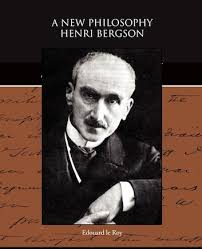Chapter III — Theory of Perception
byChapter III begins by investigating how perception evolves from raw experience into structured thought, revealing a spectrum that moves from the immediacy of sensation to constructed concepts. Henri Bergson does not view experience as static or neatly divided; instead, he explains that what we often call facts are not final, but moments within a continuum. Each moment serves both as a foundation for what follows and as a result of what preceded. This flow creates a layered understanding of reality, where knowledge is not an endpoint but a living process. For Bergson, the goal is not to analyze endlessly but to reach something simple and immediate—a direct contact with the real. His view disrupts the assumption that clarity lies in dissecting complexity; instead, it lies in overcoming that complexity to reconnect with the purity of perception.
Perception, in Bergson’s view, is not merely a subjective impression but an event that joins observer and world. It is in this meeting point where genuine knowledge takes shape—not through detached thinking, but through immersion and openness. Bergson criticizes the Kantian tradition for placing knowledge beyond experience, requiring abstract transcendence to grasp ultimate truths. He argues that such distance separates us from reality rather than brings us closer. Instead, philosophy should refine and expand our natural perceptions, not escape from them. By engaging more deeply with what is already present in daily life, thought becomes richer, not shallower. This is where he draws a connection between philosophy and art: both push against the limits of utilitarian thinking to unlock a deeper awareness of reality.
This chapter also clarifies the role of perception as fundamentally practical, designed to support action rather than objective insight. Bergson believes that what we commonly perceive is filtered through usefulness—what serves survival, communication, and efficiency is what reaches consciousness. Vision, hearing, and especially touch are directed by these needs. As a result, perception becomes a tool, not a mirror. But this practicality also blinds us. It simplifies the world into discrete, manageable units, often ignoring the richer flow of what truly is. This, Bergson claims, is why ordinary experience often feels thin and disconnected from deeper truth.
Pure perception, then, becomes more than a theoretical concept—it is a philosophical baseline. It represents perception stripped of personal bias, memory, or immediate action. Though abstract, it points to a mode of experiencing that is receptive rather than selective. Bergson does not suggest that we live in this state, but rather that we can aim toward it in thought. Our common perception constantly blends memory and utility, but by recognizing that blend, we begin to loosen its grip. This return to immediacy does not reject intelligence but refines it, allowing intuition to surface. Intuition, for Bergson, is not vague—it is clarity of a deeper kind, a direct knowing untouched by the fragmentation of symbols.
He further explains how language, while necessary, contributes to this fragmentation. Words divide continuous experience into names and forms that remain fixed. But life does not operate in static forms—it flows, transforms, and exceeds the names we give it. In everyday interaction, this naming is efficient; for deeper understanding, it is limiting. Bergson suggests that when we rely too heavily on concepts, we begin to think in images of reality rather than in reality itself. To counter this, we must learn to think in movement—to follow the shifting contours of experience rather than framing them prematurely.
The culmination of this reflection is a plea for a philosophy grounded not in symbols but in vision. A vision that does not separate observer from observed, but acknowledges their unity. This is not a mystical claim, but a call to realign thought with life as it is actually lived. Perception must be understood as something active and evolving, shaped by both what is seen and why it is seen. As we begin to notice how our practical lives filter experience, we can start to peel back those layers. What lies beneath is not less real but more real—more complex, but also more connected. Through this awareness, Bergson offers a method for reawakening the mind to the fullness of the world.
His goal is not to discard reason but to broaden its reach—to include within knowledge the living pulse of time, sensation, and presence. When perception is freed from its utilitarian roots, it opens the way to a deeper form of knowing. And it is through this deepened perception that philosophy, like art, becomes a path not just to truth, but to experience itself. Bergson’s chapter makes clear that understanding must begin not in abstraction, but in contact—with the world, with time, and with ourselves as beings shaped by both.

